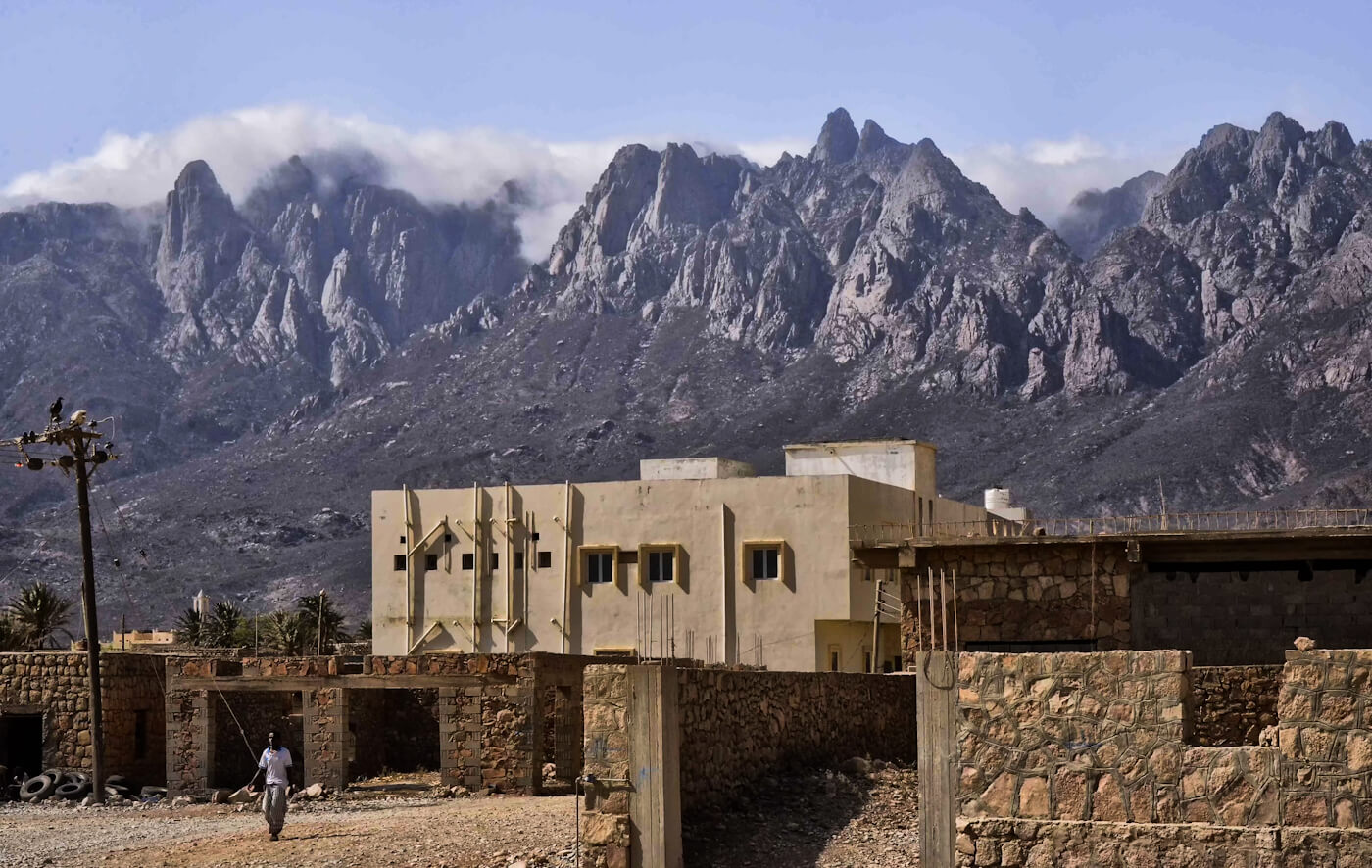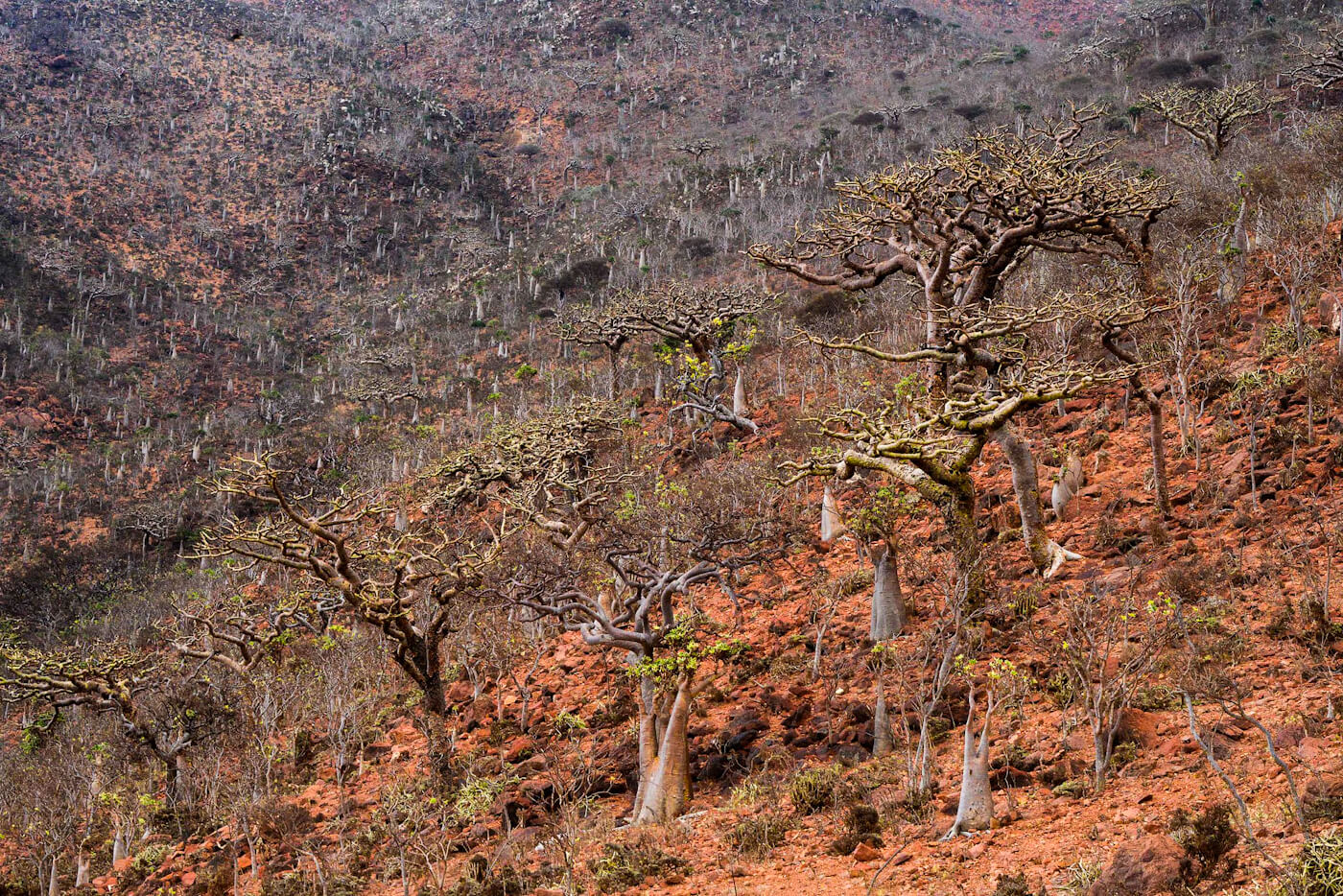SOCOTRA, YEMEN — A.S. al-Socotri remembers fondly the strange beauty of the quiet island of Socotra with its amazing dreamlike vegetation, with no boats in the sea, no lights, no planes in the sky. “Now,” al-Socotri, a resident of the island, tells MintPress, “a never-before-seen military build-up has changed the reality on this quiet Island.”
Al-Socotri recounted to MintPress memories of his island home and the rich mythology that surrounds it. The Yemeni Island is no longer insulated from the devastating four-year long war that has ravaged the Yemeni mainland. As al-Socotri puts it,
Today the Yemeni flags that could once be seen flying over Socotra’s vibrant mountains tops, streets, and the formal institutions have been replaced with the flag of the United Arab Emirates [UAE].”
Since 2018, the UAE has successfully tightened its grip on Socotra, which is located in a remote part of the Arabian Sea. The Gulf monarchy has been busy building military bases, installing communications networks, and carrying out other development projects, along with its purchase of thousands of hectares of private land from local residents. The expansion has been supervised by two UAE emirs (princes), Abu Mubarak Khalfan bin Mubarak Al Mazroui and Mahmoud Fath Ali Al Khaja.
Just as it did in the Yemeni mainland’s southern districts, the UAE managed to secure Socotra by winning the support of local residents, likely a welcome reprieve from Saudi Arabia’s habit of trying to bomb Yemeni residents into submission. UAE officials have offered Socotri islanders healthcare, work permits in Abu Dhabi, organized cultural events and group weddings, and have even granted UAE nationality to tribal chiefs and important social figures on the Island.

One high-ranking UAE official recently told a gathering of dignitaries on the island that Socotra will be part of the UAE. He said — perched in front of large images of his country’s leaders, including Mohammed bin Zayed — that “citizenship will be granted to all of the island’s sons and this is a foregone conclusion.”
Socotra’s strategic location
Considering its strategic location in the Arabian Sea, Socotra could help the UAE expand its global trade routes to states such as India, with which it has growing ties, and to the Horn of Africa, in which it seeks greater military and economic hegemony. Aside from its strategic value, the island has become a source of contention between the UAE and its Saudi allies, who have their own ambitions for Socotra.
On May 8, 2018, demonstrators marched through the streets of Socotra’s capital Hadibu, rejecting what they describe as UAE’s occupation. Following the protests, Saudi Arabia negotiated a deal for a partial UAE withdrawal from the island. Hours later, Saudi soldiers were de facto replacing the Emiratis and announcing their own development plan for the island. For Saudi Arabia, Socotra would serve as a unique tourist destination and help bolster investment into the Kingdom’s economy.

Saudi Arabia and the UAE have been competing to impose sovereignty over Socotra by carrying out rival humanitarian relief activities. The Saudis are rebuilding a number of facilities destroyed by Tropical Cyclone Mekunu in 2018, a project already undertaken by the UAE on other parts of the island.
Another Abu Dhabi?
“I’ve armed myself since the last aggression. I am ready to defend my identity against the UAE mercenaries,” al-Socotri told MintPress. Socotra’s 60,000 inhabitants have lived in relative harmony with each other and with nature for thousands of years, but last week clashes broke out between local residents who call themselves the “Security Belt in the Port of Socotra” and UAE military forces. The island is now part of the ongoing struggle between local residents who back Saudi Arabia and those prefer the UAE.
The UAE’s military and political presence on the island — along with that of its biggest partner in the Yemen war, Saudi Arabia — exposes Socotra’s unique natural environment to unpredictable geopolitical interferences such as those that have already occurred in Mahra, Yemen’s remote easternmost governorate.
Like many paramilitary forces born from the Saudi-led Coalition in Yemen, the Security Belt in the Port of Socotra was formed from members of specific tribes, not on the basis of one national army for the country as a whole — exacerbating tribal differences and reviving the desire for revenge among tribes and new ambitions for autonomy.
In Mahra, the Saudi-led Coalition established highly trained and equipped Salafist paramilitary forces, dubbed the “Mahri Elite Force.” The group is modeled around other Coalition-backed mercenary militants operating in Yemen, including the Hadhrami Elite militants in the Hadhramaut province, the Shabwani Elite militants in Shabwa, and the Pioneer Security Belt militant (al-Hizam) brigades in Aden. These paramilitary forces operate outside of local authorities and are comprised of local tribes that have close ties to Saudi Arabia.
Socotra is home to 700 rare endemic species of frankincense, aloe, and pink desert roses; soaring mountains; and waters packed with bright coral. Now, according to local residents, foreign occupation and escalating clashes are rapidly affecting the archipelago’s delicate ecosystem.

Local activists told MintPress that the UAE has transformed the island into a military outpost-cum-holiday resort. Socotra’s UNESCO-protected plants and animals, they say, are being transformed into another Abu Dhabi. Even the dragon’s blood tree — a unique tree with crimson resin and a dense crown of leaves, a beloved symbol of the island — is now threatened.
The lure of “better lives”
“When I tell relatives and friends that we should take to the streets to reject the Emiratis and preserve our Yemeni identity, they ask me why? … Our lives could be better with the Emiratis,” al-Socotri huffs. His words echo those of the many patriots who reject their island’s occupation, whatever the temptations.
There is not much in the way of a unified domestic opposition to the UAE’s occupation. What remains has by and large been led by the Islah Party, former ally of the UAE that has organized protests against Socotra’s occupation. The UAE usually responds to the protests by partially withdrawing from portions of the island — a tactic that has been effective in soothing the wrath of the protesters — and then successfully consolidating its links with leaders of the island.
In the wake of last week’s clashes, “a minister of state” in Socotra’s Coalition-formed local government, Maj. Gen. Abdul Ghani Jamil, called the UAE presence on the island an “integrated occupation.” The UAE has denied accusations that it is seeking control of the island. In May, UAE Minister of State for Foreign Affairs Anwar Gargash dismissed the Emirati escalation in Socotra as “fake news.”
Jamil went on to say, in a leaflet he published on Facebook, that “there is no justification whatsoever for the presence of the Emirates on the island of Socotra,” asking “What do you want from Socotra, where there is no Houthi, there is no ISIS or any subversive elements at all?” The ousted former Yemeni president Abdrabbuh Mansur Hadi, who is fiercely loyal to the Saudi-led Coalition, went so far as to call the UAE an occupying force. The UAE is part of the Saudi-led Coalition that launched a military campaign against Yemen four years ago to shore up “Hadi’s presidency.”
The UAE once used the Hadi government as justification to expand its influence in Yemen’s South, but now, Yemeni officials loyal to Saudi-led Coalition including the “Minister of Internal Affairs, a minister of state, and Hadi himself, are calling the UAE an occupying force. The UAE has responded by sending hundreds of troops to Socotra in recent weeks, largely from Aden where its militias have significant control.
Yemen’s mainland residents see the presence of UAE troops on Socotra, 220 miles away from mainland Yemen, as malign and colonial.
Feature photo | An unidentified local girl shown on Yemen’s Socotra island in front of the iconic Dragon’s Blood tree. Oleg Znamenskiy | Shutterstock
Ahmed AbdulKareem is a Yemeni journalist. He covers the war in Yemen for MintPress News as well as local Yemeni media.


